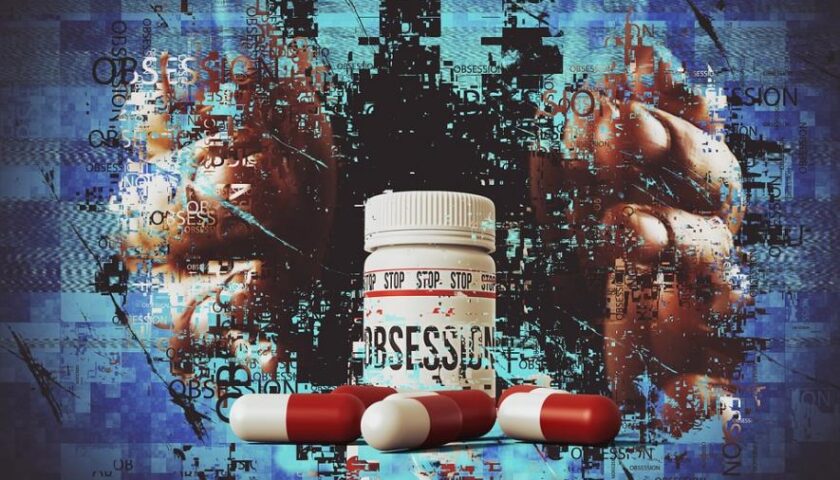10% of J&K Population Struggling with Substance Abuse, Yet Long-Term Rehab Remains a Mirage
By: Javid Amin | 26 October 2025
The Hidden Epidemic
Jammu and Kashmir is facing one of India’s most severe drug addiction crises, with over 10% of its population—approximately 13.5 lakh individuals—struggling with substance abuse, according to the Parliamentary Standing Committee on Social Justice and Empowerment.
Behind the numbers lies a grim picture: a generation caught between trauma, unemployment, and easy access to narcotics. Despite government campaigns and public awareness drives, long-term rehabilitation remains a distant dream for most patients.
The Numbers Behind the Crisis
-
13.5 lakh people in J&K are estimated to be using or dependent on drugs.
-
1.68 lakh minors, aged 10–17 years, are affected — a statistic experts describe as “the most disturbing in the country.”
-
Between 2022 and 2024, more than 25,000 patients sought treatment in government-run de-addiction facilities.
-
Of these, 1,595 required inpatient care, indicating severe dependency and chronic relapse risks.
These figures, health officials say, represent only the visible tip of a much larger crisis, as thousands remain untreated or hidden due to stigma and fear of criminalization.
The Rehab Gap: Detox Without Recovery
While the Nasha Mukt Abhiyan launched in 2022 brought attention and funding to the problem, on-ground reality paints a different picture.
Officials claim that the number of new registrations at de-addiction centers has declined — but doctors and counselors warn this is not because addiction is decreasing, but because facilities are overwhelmed, under-resourced, and largely urban-centered.
The Structural Deficit
-
J&K currently has fewer than 15 functional de-addiction centers for a population of over 1.3 crore.
-
Only three centers — in Srinagar, Baramulla, and Jammu — have inpatient rehabilitation wings offering extended psychiatric or behavioral therapy.
-
The majority of centers focus on short-term detoxification (7–15 days) rather than long-term recovery programs that last several months.
“Detox is just the first step. Without psychosocial therapy, family counseling, and reintegration support, relapse is almost guaranteed,” said Dr. Rouf Ahmad, a psychiatrist at Srinagar’s Institute of Mental Health and Neurosciences (IMHANS).
Voices from the Valley
Families across the Valley describe a cycle of hope and heartbreak. Many spend their savings sending loved ones to private rehab facilities in Punjab or Delhi, only for them to relapse within months due to lack of local follow-up care.
“My son stayed sober for four months after returning from rehab in Ludhiana,” said Shazia Begum, a mother from Pulwama. “But back home, there was no counselor, no community program. He fell back again.”
In rural districts like Kupwara, Kulgam, and Rajouri, the absence of any professional rehab support leaves families to manage addiction at home — often with tragic outcomes.
“People don’t die from overdose alone,” said a counselor with an NGO in Baramulla. “They die from neglect, shame, and the silence of society.”
The Mental Health Angle
Experts stress that substance abuse in Kashmir is not merely a criminal or moral issue — it is a mental health emergency.
Chronic exposure to conflict, unemployment, and social instability has exacerbated psychological vulnerability, making youth more susceptible to escapist behaviors.
Anxiety, depression, and post-traumatic stress disorders (PTSD) are common co-morbidities among drug users in the region.
“Addiction here is both a symptom and a coping mechanism,” said Dr. Wasim Kakroo, clinical psychologist. “Without trauma-informed care, we’re treating the symptom, not the cause.”
What’s Needed
-
Long-Term Rehabilitation Infrastructure
-
Establish more 24/7 inpatient centers across all districts.
-
Integrate psychiatric and vocational support to aid reintegration.
-
-
Community-Based Models
-
Empower NGOs, religious bodies, and youth clubs to run local recovery circles.
-
Train community volunteers in early detection and relapse prevention.
-
-
School-Based Awareness and Prevention
-
Introduce age-appropriate drug education in schools.
-
Include psychological first aid and stress management in the curriculum.
-
-
Policy and Legal Reform
-
Shift from criminalization to treatment-oriented frameworks.
-
Protect patient confidentiality to encourage voluntary rehabilitation.
-
-
Destigmatization and Public Dialogue
-
Launch statewide media campaigns to normalize help-seeking behavior.
-
Feature recovering addicts and families as advocates for hope and change.
-
A Region at Crossroads
Despite government claims of progress, health experts warn that without systemic reform, the crisis could deepen further.
The addiction epidemic is no longer confined to urban Srinagar; it is spreading rapidly across rural and border districts, fueled by unemployment, trauma, and peer influence.
If left unaddressed, the social cost could be catastrophic — from rising crime and unemployment to the erosion of Kashmir’s youngest generation.
“This is not just a drug problem,” says Dr. Yasmeen Rather, a public health researcher. “It’s a crisis of connection, care, and community.”
Editorial Reflection
The addiction crisis in Jammu and Kashmir stands as a mirror of our collective failure — of health systems, governance, and society.
Recovery is not just about quitting a substance; it’s about rebuilding a life, a purpose, and a place in society.
Until rehabilitation replaces punishment, and compassion replaces stigma, J&K’s struggle with addiction will remain not just a medical issue — but a human one.




